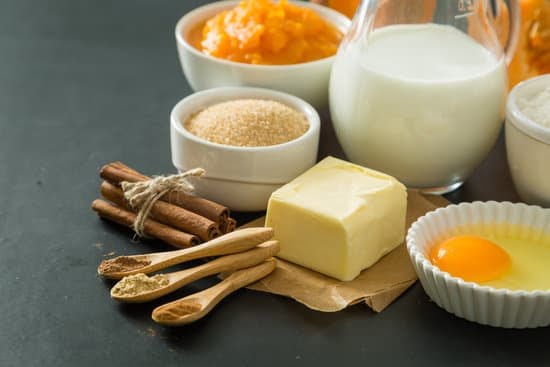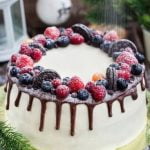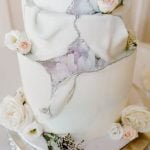Are you looking to learn how to decorate a cake without icing? While traditional icing is a popular choice for decorating cakes, there are numerous alternative methods that can be just as beautiful and delicious. In this article, we will explore different non-icing decorations that can be used to create stunning and unique cake designs. From fondant and whipped cream to fruit, chocolate, and edible flowers, there are plenty of creative options to explore.
When it comes to decorating a cake without using traditional icing, there are several types of non-icing decorations that you can consider. Fondant, whipped cream, fruit, chocolate, and edible flowers all offer unique ways to adorn your cakes. Each of these options provides a different look and flavor profile, allowing you to get creative in your cake decorating endeavors.
In the following sections of this article, we will delve into the various types of non-icing decorations mentioned above. We will discuss the tools and equipment needed for each method, provide step-by-step guides for using fondant and whipped cream, and share creative techniques for using fruit, chocolate, and edible flowers as decorative elements.
Whether you’re a baking enthusiast or simply looking to try something new in the kitchen, these alternative methods for decorating cakes are sure to inspire your creativity.
Types of Non-Icing Decorations
Decorating a cake without using traditional icing opens up a world of creative possibilities. Here’s what you need to know about using alternatives like fondant, whipped cream, fruit, chocolate, and edible flowers to create stunning and delicious cake decorations.
Fondant is a versatile sugar paste that can be rolled, cut, shaped, and applied to cakes for a smooth and polished look. It is an excellent choice for creating intricate designs, sculpted shapes, and beautiful textures. Fondant can also be dyed with food coloring to achieve vibrant colors or muted tones. To use fondant, you will need a rolling pin, powdered sugar for dusting, and cookie cutters or specialized fondant shaping tools.
Whipped cream is another popular choice for non-icing cake decorations. It can be piped into decorative designs such as rosettes, borders, and swirls using a piping bag and various decorating tips. Whipped cream can also be flavored with extracts like vanilla or almond to add depth of flavor to the cake.
Fruit makes for an exceptional natural decoration that adds color, texture, and freshness to cakes. Berries like strawberries, blueberries, raspberries, or blackberries can be arranged in elegant patterns on the surface of the cake. Larger fruits like kiwi slices or citrus wedges can be creatively used for carving decorative shapes or as garnishes for added visual appeal.
| Non-Icing Decorations | Description |
|---|---|
| Fondant | Sugar paste that can be shaped and colored for intricate designs |
| Whipped Cream | Piped into decorative designs using a piping bag and flavored with extracts |
| Fruit | Used fresh or carved into shapes as colorful and textural decorations |
Tools and Equipment Needed
Decorating a cake without traditional icing can seem like a daunting task, but with the right tools and equipment, it can become an enjoyable and creative process. The key to successfully decorating a cake without icing lies in having the proper tools and equipment on hand. Piping bags, molds, stencils, and other decorating tools are essential for creating beautiful non-icing decorations that will impress your guests.
Piping bags are crucial for applying whipped cream or frosting alternate to traditional icing onto the cake. They allow for precise application and can be used to create intricate designs and patterns. Molds and stencils are also important for shaping fondant or chocolate into decorative elements such as flowers, shapes, or letters. These tools help ensure that your non-icing decorations turn out just the way you envisioned them.
Having the right tools and equipment at your disposal is essential for creating stunning non-icing cake decorations. Not only do they make the decorating process easier, but they also open up a world of creative possibilities for making unique and visually appealing cakes without relying on traditional icing.
| Tools and Equipment | Importance |
|---|---|
| Piping bags | For precise application of whipped cream or alternative frosting |
| Molds and stencils | Help shape fondant or chocolate into decorative elements |
Step-by-Step Guide for Using Fondant
Fondant is a versatile and popular alternative to traditional icing when it comes to decorating cakes. It provides a smooth, polished finish and allows for intricate designs and decorations. Here’s a step-by-step guide on how to use fondant to decorate a cake without using traditional icing.
The first step in using fondant is to roll it out into a thin, even layer. Dust your work surface with powdered sugar to prevent sticking, then use a rolling pin to flatten the fondant to your desired thickness. Make sure to roll it out large enough to cover the entire cake.
Next, carefully lift the rolled fondant and drape it over the cake. Gently smooth the fondant down over the cake, working from the top down and around the sides, ensuring there are no air bubbles or wrinkles. Use a fondant smoother or your hands to press the fondant against the cake and remove any imperfections.
Once the fondant is applied, trim off any excess with a sharp knife or pizza cutter. You can then use additional pieces of fondant to create decorative shapes or designs on top of the cake. With some practice and creativity, using fondant can result in beautifully decorated cakes without traditional icing.
As you become more comfortable working with fondant, you can experiment with different colors, textures, and techniques to take your cake decorating skills to the next level. With patience and practice, using fondant can open up endless possibilities for creating stunning and delicious treats without relying on traditional icing.
Creative Techniques for Using Whipped Cream
Whipped cream is a delicious and versatile alternative to traditional icing when it comes to decorating cakes. Not only does it add a light and fluffy texture to the cake, but it also provides the perfect canvas for creative designs. Here are some creative techniques for using whipped cream to decorate your cake:
1. Piping: Using a piping bag fitted with a decorative tip, you can create intricate designs on your cake with whipped cream. Whether it’s swirls, stars, or even writing a message, piping allows you to add a personal touch to your cake.
2. Rosettes: One of the most popular decorative designs with whipped cream is rosettes. By using a star-shaped piping tip and applying consistent pressure while rotating the cake, you can create beautiful flower-like rosettes that will instantly elevate the look of your cake.
3. Other Decorative Designs: You can get creative with whipped cream by using stencils, molds, or even freehand techniques to create unique designs on your cake. Whether it’s creating patterns, shapes, or even creating an ombre effect, there are endless possibilities for decorating with whipped cream.
Using whipped cream as a decoration not only adds visual appeal but also enhances the flavor of the cake. With these creative techniques, you can easily achieve stunning and delicious results without traditional icing. Whether it’s for a special occasion or just to satisfy your sweet tooth, whipped cream is an excellent choice for decorating cakes in a unique and tasty way.
Tips for Using Fruit as a Decorative Element
When it comes to decorating a cake without using traditional icing, fruit can be a delightful and refreshing option. Not only does it add a pop of color and natural sweetness to the cake, but it also provides a healthier alternative to heavy icing. Here are some tips for using fruit as a decorative element on your cakes:
- Arrangement: The way you arrange the fruit on the cake can greatly impact its visual appeal. Try creating patterns or designs with sliced or whole fruits such as strawberries, kiwi, blueberries, and raspberries. You can also create geometric shapes or use fruit to form a border around the edge of the cake.
- Carving: Carving fruit can add an intricate and artistic touch to your cake decorations. Consider carving melons or pineapples into decorative shapes such as flowers, leaves, or even whimsical figures. These carved fruits can then be placed on top of the cake or used as accents around the sides.
- Garnishing: Adding small pieces of fruit as garnishes can elevate the overall look of your cake. Sprinkle pomegranate seeds or edible flower petals over the frosting-free surface of the cake for a visually striking effect. You can also use mint leaves or citrus zest to add freshness and fragrance to your creation.
Incorporating fruit into your cake decorations not only brings a burst of color and flavor but also enhances the overall aesthetic appeal of your creation. With these tips for arranging, carving, and garnishing fruit on your cakes, you can easily create stunning and delicious masterpieces that will impress any crowd.
Using Chocolate as a Beautiful and Delicious Decoration
When it comes to decorating a cake without traditional icing, chocolate can be a fantastic and delicious alternative. Whether you’re looking to add a decadent touch or simply want to avoid using icing, chocolate offers a wide range of creative possibilities for decorating cakes. From shaving and melting to molding, there are various techniques for using chocolate as a beautiful and appetizing decoration.
Shaving
One way to use chocolate as a decorative element is by shaving it. Using a vegetable peeler or a sharp knife, you can create delicate chocolate curls or shavings to adorn the top of your cake. This technique adds an elegant and eye-catching touch to any dessert, and it’s relatively easy to do. Simply hold the chocolate firmly and draw your peeler or knife across the surface to create thin, even shavings.
Melting
Another popular method for using chocolate as a decoration is by melting it. Melted chocolate can be drizzled over the surface of the cake for a simple yet stunning effect, or it can be used to create intricate designs and patterns.
To melt chocolate, chop it into small pieces and place them in a heatproof bowl set over simmering water. Stir the chocolate occasionally until smooth and creamy, then use a spoon or piping bag to apply it to the cake in whatever design you desire.
Molding
If you’re feeling particularly creative, consider molding chocolate into decorative shapes and figures to adorn your cake. You can use silicone molds or shape the chocolate by hand to create flowers, hearts, ribbons, or any other embellishments you like. Once the molded chocolate has set, carefully arrange it on top of the cake for an impressive and personalized touch.
Edible Flower Arrangements
When it comes to decorating a cake without traditional icing, using edible flowers can be a beautiful and unique option. Not only do edible flowers add a pop of color to your cake, but they also provide a delicate and natural aesthetic that can be perfect for special occasions such as weddings, birthdays, or garden parties.
However, it’s important to choose the right flowers, prepare them properly, and know how to place them on the cake for the best results.
Choosing the Right Flowers
Not all flowers are suitable for use as cake decorations. It’s essential to select edible flowers that are safe for consumption and free from pesticides or other chemicals. Popular choices for edible flowers include roses, pansies, violets, lavender, and chamomile. Before using any flower as a cake decoration, make sure to research its edibility and potential allergic reactions.
Preparing Edible Flowers
Before using edible flowers on a cake, they should be thoroughly cleaned and prepared. Gently rinse the flowers under cold water to remove any dirt or debris. You can also use a small brush to clean hard-to-reach places on the flower petals. Once cleaned, allow the flowers to air dry on a paper towel before placing them on the cake.
Placing Edible Flowers on the Cake
When it comes to placing edible flowers on a cake, you have numerous options for arrangement. You can simply place individual blooms strategically around the surface of the cake or create an intricate design with carefully arranged petals.
Another popular method is to create a floral crown around the perimeter of the cake or cascade the blossoms down one side for an elegant look. No matter which arrangement you choose, be sure not to overcrowd the cake with too many flowers so as not to overwhelm its appearance.
Using edible flowers as decorations opens up endless creative possibilities when it comes to decorating cakes without traditional icing. With some careful consideration in choosing your blooms and thoughtful placement on your confectionery creation, you can achieve stunning results that are both visually appealing and delicious.
Conclusion
In conclusion, the art of cake decoration extends far beyond traditional icing. This article has explored various alternative methods for decorating cakes without the use of icing, including fondant, whipped cream, fruit, chocolate, and edible flowers. By using these non-icing decorations, bakers and cake decorators can unleash their creativity and showcase stunning designs while also enhancing the deliciousness of their treats.
The versatility of non-icing cake decorations offers endless possibilities for creating unique and visually appealing cakes. With the right tools and equipment such as piping bags, molds, stencils, and other decorating tools, decorators can bring their imaginative designs to life. Whether it’s shaping fondant into intricate patterns or creating beautiful flower arrangements with edible blooms, the options for non-icing cake decorations are truly limitless.
Aspiring bakers may wonder how to decorate a cake without icing – this article has provided a step-by-step guide for utilizing fondant, creative techniques for using whipped cream, tips for using fruit as a decorative element, different ways to use chocolate as a beautiful and delicious decoration, and guidance on edible flower arrangements.
The possibilities are endless when it comes to non-icing cake decorations; bakers are encouraged to explore the world of alternative cake decoration techniques in order to create visually stunning and delectable treats that will impress any audience.
Frequently Asked Questions
How Can I Decorate a Cake at Home Without Icing?
Decorating a cake at home without using icing can be done using alternative ingredients like whipped cream, chocolate ganache, or fruit slices. You can also use stencils, powdered sugar, or edible flowers to add visual appeal to your cake.
How Do You Practice Cake Decorating Without Frosting?
To practice cake decorating without frosting, you can use fondant, marzipan, or even modeling chocolate to sculpt decorations for your cake. Another option is to use food coloring to create intricate designs on the cake’s surface.
How Do You Write Your Name on a Cake Without Icing?
Writing your name on a cake without icing can be achieved by using melted chocolate, caramel sauce, or even fruit preserves. You can also try piping your name with a mixture of powdered sugar and milk to create an edible “paint” for writing on the cake’s surface.

Welcome to our cake decorating blog! My name is Destiny Flores, and I am the proud owner of a cake decorating business named Cake Karma. Our mission is to provide delicious, beautiful cakes for all occasions. We specialize in creating custom cakes that are tailored specifically to each customer’s individual needs and tastes.





